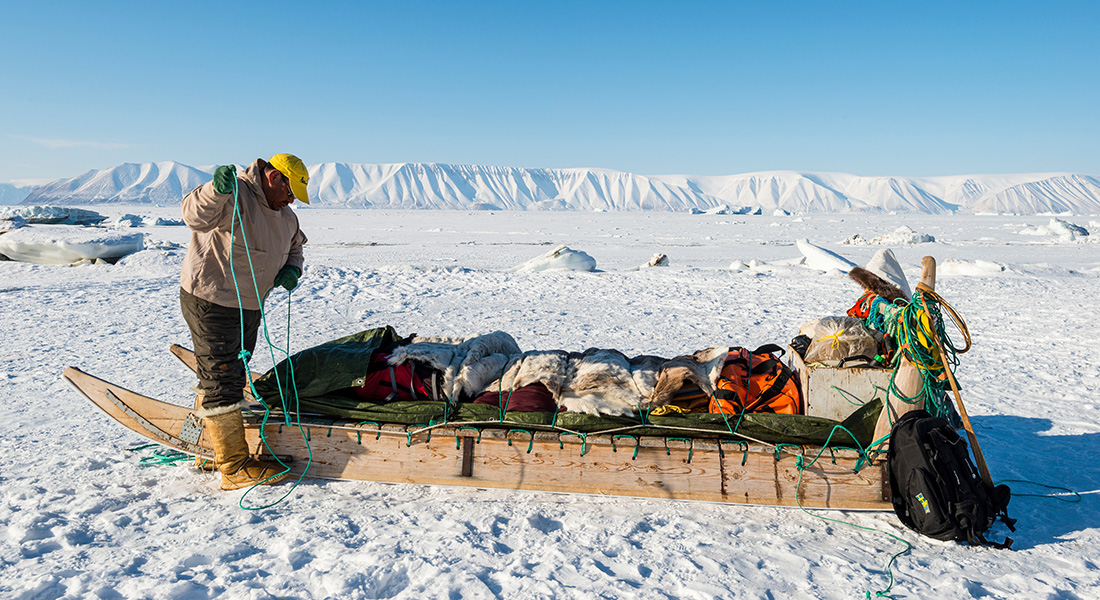Ancient arctic adaptations may influence modern disease risk
Inuit in Greenland possess a unique genome, which has evolved over thousands of years as they adapted to a cold climate and consumed a diet largely consisting of marine mammals. Now, a team of international scientists has revealed how these genetic adaptations influence circulating protein levels in the blood and may modify their risk of diabetes and cardiovascular disease today

Over the past 25 years, Greenlanders have experienced a dramatic increase in cardiometabolic diseases, including type 2 diabetes and cardiovascular disease. Scientists have already linked their increased risk of these diseases to genetic variants that are common in the Inuit Greenlandic population but rare in other populations. These variants likely provided survival advantages in the harsh Arctic environment and with traditional diets based on marine mammals, which are rich in protein and polyunsaturated fatty acids.
What is less well understood is how these variants increase the risk of disease. Our genome plays a crucial role in regulating the levels of proteins in the bloodstream, which in turn control inflammation, metabolism, immune responses, and cardiovascular function. If a genetic variant affects both protein levels and disease risk, it suggests that the protein is likely involved in the disease's development.
In a new study published in the American Journal of Human Genetics, an international team of researchers identified 251 genetic variants that significantly affect circulating protein levels in Greenlanders. The study revealed that genetic control over certain proteins is substantially stronger in Greenlandic Inuit than in Europeans, and uncovered 70 previously unreported associations. Their discoveries provide crucial insights into how Arctic-adapted genes influence modern disease risk.
"By understanding how genetic variants regulate proteins in the blood, we can identify new drug targets and understand why certain populations are more susceptible to specific diseases. This is especially important for populations like Greenland, where unique genetic adaptations that once provided survival advantages now contribute to elevated disease risks,” said Professor Torben Hansen from the Novo Nordisk Foundation Center for Basic Metabolic Research at the University of Copenhagen, who co-led the study.
Linking ancient adaptations to modern disease
In the study, the scientists analyzed blood samples from 3,707 Greenlandic individuals collected through population health surveys conducted between 1998 and 2019. Using advanced proteomics technology, they measured levels of 177 proteins related to inflammation and cardiovascular health. They then examined how genetic variation across the genome influenced these protein levels.
The research revealed several significant associations between Arctic-enriched genetic variants and disease-related proteins. The CPT1A variant, which likely enabled the Inuit to process traditional high-fat Arctic diets, was associated with lower levels of 55 inflammatory and cardiovascular proteins in carriers. The TBC1D4 variant, which contributes to up to 10% of diabetes cases in Greenland, is associated with altered levels of nine immune-related proteins, including key inflammatory markers. Additionally, the researchers discovered a novel genetic variant affecting IL-6 levels that was associated with a 31% increased risk of cardiovascular disease in Greenlanders.
Importantly, this study found that genetic control over protein levels is stronger in Greenlandic Inuit than in Europeans. For certain key proteins, such as IL-27 and Gal-9, genetic variants account for 30-44% of their levels in Greenlanders but less than 20% in Europeans. This demonstrates that isolated populations can harbor high-impact genetic variants that reveal fundamental biological mechanisms invisible in more commonly studied populations.
The Case for Diverse Genomic Research
This research builds on a comprehensive genetic study of Greenlanders published in Nature earlier this year. While that study mapped the population's unique genetic architecture and identified disease-associated variants, this new work reveals the biological mechanisms behind these associations and demonstrates how Arctic-adapted genetic variants influence circulating protein levels and disease development.
Nearly all previous studies linking genetic variants to protein levels have focused on individuals of European ancestry, which leaves a significant gap in scientific knowledge. By revealing how Arctic-adapted variants influence protein levels and disease risk, this study demonstrates that genetic architecture varies substantially across populations. In so doing, it provides insights relevant to both Greenlandic health interventions and global understanding of cardiometabolic disease mechanisms.
“Indigenous and underrepresented populations have been largely excluded from genomic research. Without studying diverse populations, we miss critical pieces of human biology and perpetuate health disparities," said Sara Stinson, who carried out the research while she was a Postdoc at the Novo Nordisk Foundation Center for Basic Metabolic Research at the University of Copenhagen and co-first author of the study together with Postdoc Renzo Balboa from the University of Copenhagen.
About the Study
The research was conducted by an international team led by the Novo Nordisk Foundation Center for Basic Metabolic Research and the Department of Biology at the University of Copenhagen, in collaboration with the National Institute of Public Health at the University of Southern Denmark, the Greenland Center for Health Research, and Steno Diabetes Center Greenland.
The study was funded by the Novo Nordisk Foundation, the Independent Research Fund Denmark, and other sources. Data were collected through three population-based health surveys conducted in Greenland with ethics approval and participant consent.
Contact
Professor Torben Hansen
NNF Center for Basic Metabolic Research, University of Copenhagen
torben.hansen@sund.ku.dk
Dr. Sara Elizabeth Stinson
Oslo University Hospital
sara.stinson@sund.ku.dk
